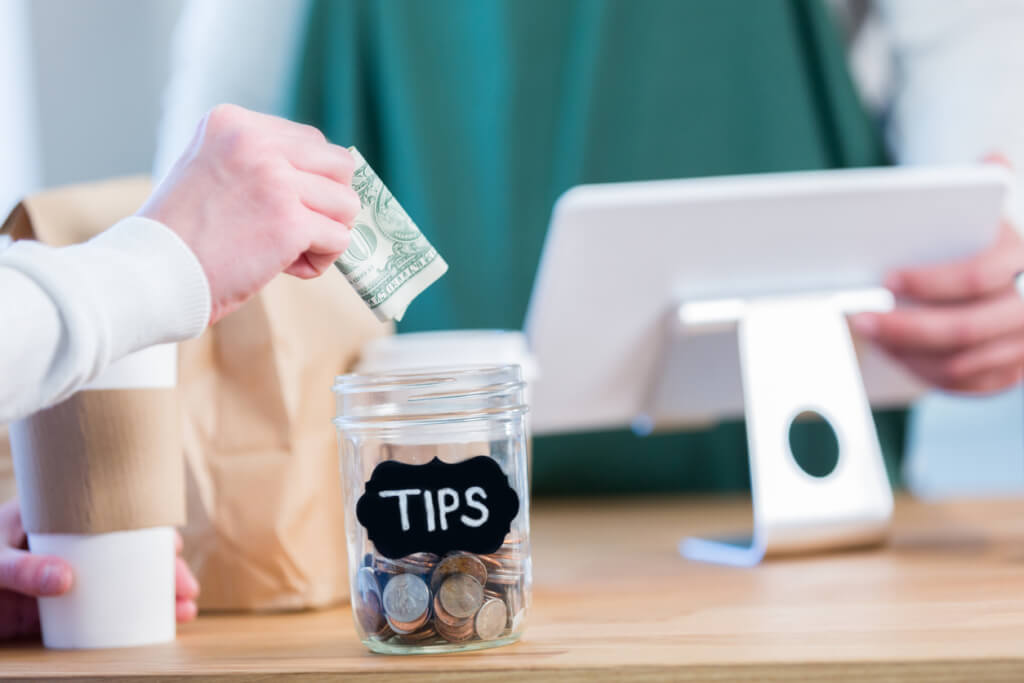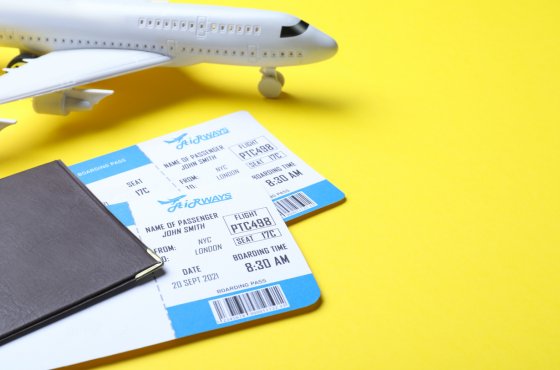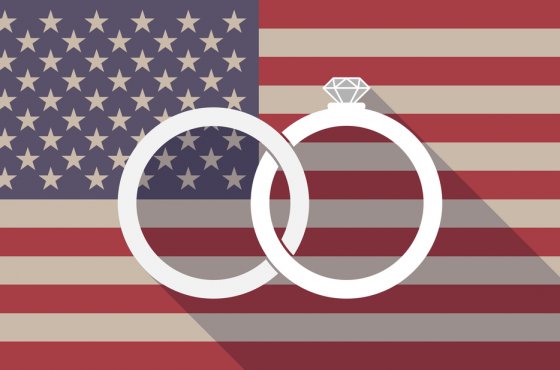Americans are leaving less and less tips and are very unhappy with this tradition.
There is no comprehensive tipping guide in America and it is unlikely that two people will tip in the same way. According to a new poll Bankrate, the only thing most Americans can agree on is that they don't like certain aspects of tipping.

Photo: IStock
According to the survey, about two in three (66%) American adults have a negative attitude towards tips. Americans said they think companies should pay employees better than rely on tips (41%), they are annoyed by fixed tip amounts (32%), they think tip culture is out of control (30%) , they do not understand who and how much to tip (15%), and they would be willing to pay more if we could refuse tips (16%).
Few topics generate as much passionate debate as tipping. There is so much confusion about whether to tip, and if so, how much.
On the subject: Depression, suicide, hopelessness: 50% of US teens feel miserable because of social media
Despite the annoyance, people did not stop tipping for everyday services. More than two-fifths (44%) of American adults who dine in restaurants typically tip at least 20%. But when it comes to many services, such as hairdressers, food delivery, taxis, etc., everyone treats tips differently.
Tipping World Statistics
Fewer people say they always tip workers of any category. From 2019 to 2023, tipping rates in the United States have been steadily declining. For example, waiters in restaurants received tips from 2021% of customers in 75, but in 2021 this figure dropped to 65%. Food delivery workers were tipped by 2021% of customers in 59, but only 2023% in 50. The situation is approximately the same with taxi drivers - in 2021, 48% of passengers left tips, and in 2023, only 40%. About a quarter of all customers left tips to maids and baristas—by 2023, this figure had also fallen slightly.
Most importantly, the percentage of people who always tip their hair stylists has dropped from 66% in 2022 to 53% in 2023.
Waiters in restaurants most often (65%) always receive tips from customers. In addition, 50% of those who use food delivery services, such as food from restaurants or groceries delivered through apps like Uber Eats and DoorDash, will always tip.
The propensity to tip varies greatly depending on demographic factors such as age, gender, and location. Generally, men are less likely to tip than women. Most importantly, 60% of women who go to the hairdresser always tip, compared to 46% of men. Men are also less likely to tip waiters, food deliveries, and others than women. Percentage of men and women who tip:
- Waiters in restaurants: 70% women, 60% men.
- Hairdressers: 60% women, 46% men.
- Food delivery workers: 54% women, 45% men.
- Taxi / minibus drivers: 45% women, 36% men.
The tendency to always tip for a favor increases with age. Gen Z (aged 18–26) tend to tip the least favor, while Baby Boomers (aged 59–77) tend to tip the most.
The generation gap is greatest for those who go to hairdressers. Only 24% of Gen Zers who use hairdressers always tip, while almost three times as many Baby Boomers (70%) who use this service always leave a tip. In comparison, 40% of millennials (aged 27-42) and 67% of Gen Xers (aged 43-58) always tip their hairdresser or stylist.
In addition, Gen Zers are significantly less likely than Baby Boomers to tip when eating in restaurants (35% vs. 83%), using food delivery (31% vs. 62%), or when using taxis (22% compared to 56%).
The one exception to generational trends is home services or repairs. Generation Z is actually the most likely (15%) to tip for home maintenance or repairs, and this trend is decreasing with each generation. Only 6% of baby boomers who use home services tip.
Midwesterners are 16% more likely to tip at restaurants than southerners or westerners. Midwesterners are more likely to tip for multiple favors than residents of other regions.
Like the article? Support ForumDaily!?
Most importantly, 77% of Midwesterners who dine in restaurants always tip, compared to 67% of Northeasterners and 61% of Southerners and Westerners.
More than one in three (35%) Northeasterners who use hotel services always tip, compared to 23% of Westerners, 20% of Southerners, and 19% of Midwesterners.
Similarly, 25% of Northeasterners who deliver furniture and appliances always tip, compared to 18% of Westerners, 16% of Southerners, and 10% of Midwesterners.
Nearly one in three Americans believe tipping culture is out of control
Americans may be quite confused about when and how much to tip in 2023.
While a growing number of businesses such as coffee shops and food trucks are encouraging tips at checkout, not everyone enjoys being forced to tip, especially if the amount is large. About one in three (30%) American adults told Bankrate that they think the tipping culture is out of control. Older Americans tend to think tipping culture gets out of hand more often than younger generations:
- Generation Z: 22%.
- Millennials: 27%.
- Generation X: 33%.
- Baby Boomers: 33%.
Tipped workers earn the federal minimum wage of $2,13 an hour, according to the US Department of Labor, amid the expectation that they will earn a higher income from tips. According to Bankrate, two in five (41%) American adults think businesses should pay their employees better rather than relying on tips, the most common negative attitude towards tips.
A total of 66% of people experienced at least one negative attitude towards tips. Only 7% of people disagree with any statement about tips.
Mandatory tips were the second most common negative in this regard for Americans. Nearly one in three (32%) American adults are annoyed by tip offers, and 18% said they tend to tip less or not at all when they are shown a certain amount of encouragement. Only 9% say they tip more.
You may be interested in: top New York news, stories of our immigrants, and helpful tips about life in the Big Apple - read all this on ForumDaily New York.
“Inflation and general economic anxiety seem to be making Americans more stingy in their tipping habits, but we're seeing more invitations to tip than ever,” said Bankrate senior industry analyst Ted Rossman. — This is a fascinating question with several clear answers. However, one thing is clear: tipping is unlikely to leave American society anytime soon.”
16% of American adults say they would pay more if American culture could do away with tips. Young Americans are more likely to say they are willing to pay more: 21% of Millennials and 18% of Gen Z compared to 13% of Gen X and 12% of Baby Boomers.
Other pain points include confusion about who and how much to tip (15%) and claims that they tip less after COVID-19 (9%).
Not all Americans have a negative attitude towards tipping - many still give good tips. Nearly one in two (44%) American adults in restaurants say they usually tip at least 20%. Most often, 57% of Baby Boomers typically tip 20%, followed by 50% of Gen Xers, 34% of Millennials, and 25% of Gen Zers.
Tipping can be a positive experience too: 35% of American adults say they feel good about leaving a generous tip. Unlike those who tip less after the pandemic, 14% of American adults say they tip more after COVID-19.
3 rules for deciding how much to tip
Tipping can be confusing. It may seem that the proposed recommendations are constantly changing. Because tipped workers rely on the money to pay their bills, Rossman suggests tipping 20% as standard practice. But this can be tricky when you pay for inexpensive services like coffee or if you have more than one worker to pay. Here are some tips to keep in mind.
В personalized services Tip every worker who helps you. Are you in a hairdressing salon and two different workers cut and color your hair? Or did you hire three workers to help you move? If you've received one-to-one, personalized service from multiple people, tip each person to thank them for their skilled work.
Leave at least a small amount for inexpensive services. You probably don't need to break down a calculator to figure out how to tip coffee. Typically, for services costing around $5 or less, leaving a dollar or extra change in the bank to tip is sufficient.
Hold some cash on hand. Cash is best for some services, such as valet parking and hotel housekeeping, where a tip is not usually offered when paying for the service. If you're paying for a service that doesn't allow you to tip at the end, ask the worker if you can tip them through a peer-to-peer payment platform like Venmo or Zelle. Some companies don't allow their employees to receive tips, but it never hurts to ask.
Read also on ForumDaily:
Excursion to the USA is recognized as the best in the world: how to visit it
Trump walked into a restaurant in Miami and promised 'food for everyone', then left without paying
Subscribe to ForumDaily on Google NewsDo you want more important and interesting news about life in the USA and immigration to America? — support us donate! Also subscribe to our page Facebook. Select the “Priority in display” option and read us first. Also, don't forget to subscribe to our РєР ° РЅР ° Р »РІ Telegram and Instagram- there is a lot of interesting things there. And join thousands of readers ForumDaily New York — there you will find a lot of interesting and positive information about life in the metropolis.











